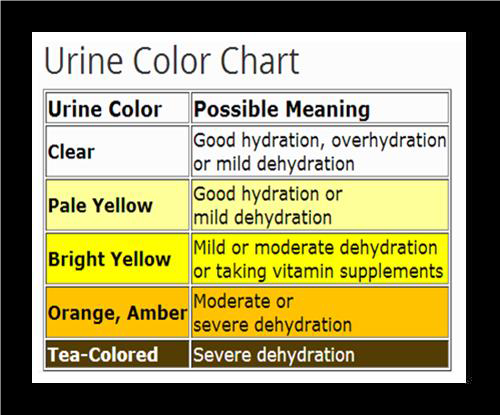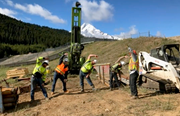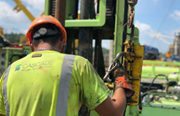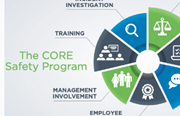How to Recognize (and Prevent) Heat Related Illness
By: Brook KingTemperatures are rising across the country and, with them, the risk of a heat related illness (HRI). A hazard for anyone but especially for those who work outdoors, it’s important to understand how to prevent, recognize and respond to HRI.
WHAT IS HEAT RELATED ILLNESS?
According to the National Institute for Occupational Safety and Health (NIOSH), there are six types of HRI.
- Heat Stroke: This occurs when, due to excessive heat exposure, a body is no longer able to regulate its own temperature. It can cause permanent damage or even death if it isn’t treated. Symptoms include confusion, slurred speech, loss of consciousness and seizures.
- Heat Exhaustion: When a body loses a lot of water and salt (typically by sweating), heat exhaustion can be the result. Symptoms include headache, nausea, dizziness and weakness.
- Rhabdomyolysis: If someone is physically exerting themselves in excessive heat, the stress of both together can break down and even kill muscle, which could result in irregular heartbeat, seizures or damage to one’s kidneys.
- Heat Syncope: Fainting and dizziness due to heat exposure, dehydration and lack of acclimatization.
- Heat Cramps: People who sweat a lot during strenuous activity deplete their body’s supply of salt, which results in cramps. This can also be a sign of heat exhaustion.
- Heat Rash: This is a rash that can occur when one has been sweating in high heat.
While the degree of seriousness varies, none of these forms of HRI are desirable and they are all typically preventable.
HOW CAN HEAT RELATED ILLNESS BE PREVENTED?
Stay hydrated. The most important method of preventing heat related illness is by staying hydrated. At Cascade, we encourage our crews to consume one quart of water per hour when temperatures approach action levels. Gatorade G2 and Powerade are useful beverages thanks to the added electrolytes. Additionally, we discourage consumption of caffeine during the work day, as it can cause dehydration.
Watch your urine. Dehydration can be sneaky, which is why field services personnel should pay attention to the color of their urine. The color can indicate dehydration.

Buddy up. Cascade crews also utilize the “Buddy System,” where they monitor one another to ensure everyone is in suitable condition to work.
Take breaks. Take breaks from work as needed, increasing the frequency as the temperature goes up. It may also be a good idea to take an extended lunch.
Find (or make!) shade. If there is no shade on the project site naturally, it’s imperative that some is created by way of a tent or other protection from the sun.
HOW CAN HEAT RELATED ILLNESS BE ADDRESSED?
If someone is exhibiting signs of heat rash or heat cramps, encourage them to rest in a shaded area and consume water or an electrolyte-enhanced beverage until symptoms subside. However, if symptoms are more serious, they may need to seek medical attention.
This summer, encourage your colleagues to become familiar with the signs of HRI—for their own safety as well as yours. You can also download the free OSHA heat safety app to determine heat-related risks and protective measure to take.
Have a question for the author? Reach out to Environmental Health & Safety Director Brook King at [email protected].









